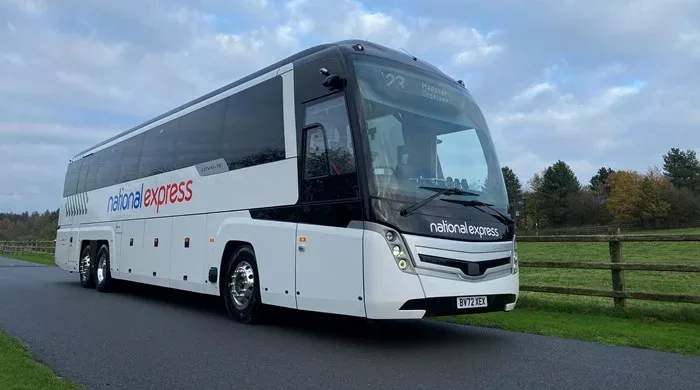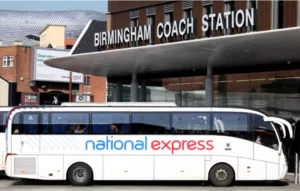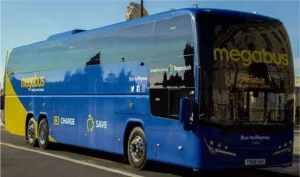National Express is trialling a new “Mirroreye” safety system which uses cameras rather than traditional wing mirrors to let drivers see what’s behind.
Developed in partnership with Portuguese manufacturer Orlaco, the CMS is designed to improve visibility around the coach, remove blindspots, give improved night vision and reduce the risk of minor collisions. National Express says the removal of wing mirrors will also help improve fuel efficiency, thanks to the slick aerodynamic design.
Other new features of the Levante IIIA coach are e-driver alerts, drawing drivers’ attention to potential hazards such as vulnerable road users or obstructions within the blindspot area. The cab design has also improved, enabling drivers to easily navigate controls such as heating/air-conditioning and wheelchair lift deployment.
Over the coming months, the coach operator will have two Levante IIIA vehicles on trial, working with partner operators Clarkes of London and Bruce’s Coaches to run a range of short, medium and long-distance routes.
Tom Linnecor, head of engineering at National Express, said: “The new Levante IIIA represents a step forward in the vehicle’s design. It takes driver technology to the next level by increasing the number of safety features and keeping our passengers and other road users front of mind.
“Working closely with Caetano, the majority of the latest changes implemented have stemmed from feedback from our drivers and engineers. In addition to improved visibility for drivers, the mirrorless coaches will also deliver significant fuel savings. We’re looking forward to getting the Levante IIIA out on the road and gaining as much insight as we can.”
As part of the trial, National Express will review driver feedback and make any necessary specification changes before the vehicles are then rolled out across the fleet from Spring 2023, in line with the company’s continual replacement programme.
The blind spot warning is a function that alerts the driver if a vehicle is positioned in the blind spot. This system is designed to reduce the risk of accidents caused by a lack of visibility in this area. The approaching vehicles are detected via radar sensors that are fitted on each side of the vehicle, located directly behind the front wheels.
(Picture – National Express)



















